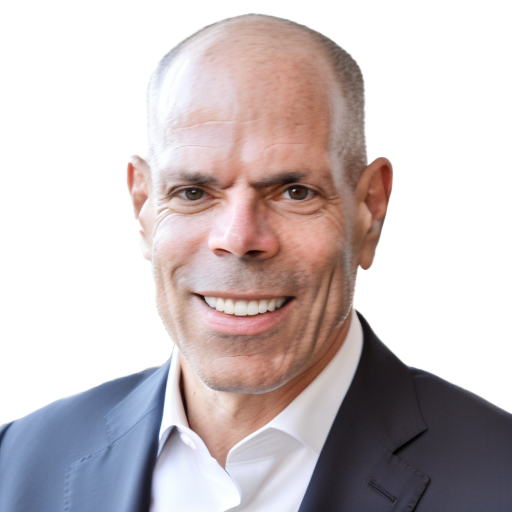
In today’s complex and ever-evolving threat landscape, traditional security measures often fall short of protecting against sophisticated attacks. To stay ahead of malicious actors, organizations must adopt advanced threat intelligence techniques that go beyond static indicators of compromise (IOCs) and signature-based detection.
The Limitations of Traditional Threat Intelligence
Traditional threat intelligence methods, which rely heavily on IOCs and signature-based detection, have limitations that make them vulnerable to evasion by advanced attackers. These limitations include:
- Static nature of IOCs: IOCs are often static and can be easily modified by attackers, rendering them ineffective against polymorphic threats.
- Signature-based detection: Signature-based detection relies on known threat patterns, which can be circumvented by attackers who constantly evolve their tactics.
- Reactive approach: Traditional methods often take a reactive approach, waiting for attacks to occur before responding.
Advanced Threat Intelligence Techniques
To overcome these limitations, organizations must embrace advanced threat intelligence techniques that provide a more proactive and comprehensive approach to security. These techniques include:
Behavioral Analysis
Behavioral analysis involves monitoring network traffic and user behavior for anomalies that may indicate malicious activity. By analyzing patterns of behavior, organizations can detect suspicious activities that might not be flagged by traditional detection methods. Machine learning algorithms can be used to automate this process and identify emerging threats.
Real-World Example: Detecting an Insider Threat Using Behavioral Analysis
Imagine a large financial institution that has established a baseline of normal user behavior patterns. One day, a long-time employee, John, starts accessing sensitive customer data from unusual locations and at unusual times. He also begins transferring large sums of money between accounts, something he’s never done before.
Behavioral analysis tools, monitoring John’s activity, would flag these deviations as anomalies. The system might alert security analysts that John’s behavior is significantly different from his usual patterns. This could indicate a potential insider threat, such as John attempting to steal funds or sell customer data on the dark web.
Security analysts would then investigate further, possibly reviewing surveillance footage, conducting interviews, and analyzing network traffic to gather more evidence. If the investigation confirms John’s malicious intent, the institution can take appropriate action, such as terminating his employment and reporting the incident to law enforcement.
Machine Learning
Machine learning can be applied to threat intelligence analysis to build predictive models that can identify potential threats before they occur. By analyzing large datasets of threat intelligence, machine learning algorithms can learn to recognize patterns and anomalies that may indicate malicious activity.
Real-World Example: Using Machine Learning to Detect Phishing Emails
Scenario: A large financial institution receives thousands of emails daily, many of which are phishing attempts designed to trick employees into clicking malicious links or divulging sensitive information. Manually reviewing each email for suspicious content is time-consuming and often ineffective.
Machine Learning Solution:
- Data Collection: The institution collects a vast dataset of emails, including both legitimate emails and known phishing attempts.
- Feature Engineering: Key features are extracted from each email, such as the sender’s address, subject line, email body content, and the presence of suspicious links or attachments.
- Model Training: A machine learning algorithm, such as a random forest or support vector machine, is trained on this dataset. The algorithm learns to identify patterns and characteristics that distinguish phishing emails from legitimate ones.
- Model Deployment: The trained model is deployed into production to analyze incoming emails in real time.
- Threat Detection: As new emails arrive, the model analyzes their features and assigns a probability score indicating the likelihood of it being a phishing email. If the score exceeds a predefined threshold, the email is flagged as suspicious and sent for further review by a human analyst.
Benefits:
- Increased Efficiency: Machine learning can automatically scan thousands of emails per minute, significantly reducing the workload of human analysts.
- Improved Accuracy: Machine learning algorithms can learn complex patterns and detect phishing attempts that may be difficult for humans to identify.
- Reduced False Positives: By fine-tuning the model, false positives (legitimate emails mistakenly flagged as phishing) can be minimized.
- Proactive Threat Detection: Machine learning can identify new phishing tactics and evolve its detection capabilities over time.
Real-World Impact: Many financial institutions and other organizations have successfully deployed machine learning-based phishing detection systems, resulting in a significant reduction in successful phishing attacks and improved security posture.
Threat Hunting
Threat hunting is a proactive approach to security that involves actively searching for threats within an organization’s network, rather than passively waiting for them to be detected. Skilled threat hunters can use a variety of techniques, such as log analysis, network forensics, and threat intelligence, to identify and investigate potential threats.
Threat Hunters: The Digital Detectives
Threat hunters are cybersecurity professionals who actively seek out and neutralize advanced threats that may have evaded traditional security defenses. They employ a combination of technical skills, analytical thinking, and creativity to identify and eliminate malicious actors lurking within networks.
Tools of the Trade:
- Security Information and Event Management (SIEM) tools: These platforms aggregate security data from various sources, enabling threat hunters to correlate events and identify suspicious activity.
- Endpoint Detection and Response (EDR) solutions: EDR tools provide visibility into the behavior of devices on a network, helping threat hunters detect and investigate malicious activity.
- Network traffic analysis tools: These tools capture and analyze network traffic, allowing threat hunters to identify unusual patterns or suspicious connections.
- Sandbox environments: Sandboxes are isolated environments where suspicious files or code can be safely executed to assess their behavior.
- Open-source intelligence tools: Threat hunters often leverage open-source resources to gather information about potential threats and adversaries.
Routines and Methods:
- Hunting for anomalies: Threat hunters regularly search for deviations from normal network behavior, such as unusual traffic patterns, unauthorized access attempts, or suspicious file activity.
- Reverse engineering malware: They analyze malicious software to understand its functionality, identify its origin, and develop countermeasures.
- Threat intelligence analysis: Threat hunters stay up-to-date on the latest threat intelligence reports and trends to identify potential threats.
- Incident response: When a security incident occurs, threat hunters are often involved in investigating the root cause, containing the breach, and restoring systems.
- Red teaming exercises: Threat hunters may participate in red teaming exercises, where they simulate attacks to test an organization’s security defenses and identify vulnerabilities.
What They Look For:
- Indicators of Compromise (IOCs): These are specific artifacts or patterns that indicate a malicious actor has compromised a system.
- Unusual network traffic: Abnormal network activity, such as excessive data transfers or connections to suspicious IP addresses.
- Suspicious file activity: Files that are being created, modified, or deleted unusually.
- Abnormal user behavior: Users who are accessing resources or performing actions that are outside their normal scope of authority.
- Advanced Persistent Threats (APTs): These are sophisticated, long-term attacks that can remain undetected for extended periods.
By employing these techniques and tools, threat hunters play a critical role in protecting organizations from advanced cyber threats and ensuring their continued security.
Case Studies and Examples
Advanced threat intelligence techniques have been successfully used to detect and mitigate sophisticated attacks in a variety of industries. For example, a financial institution may use behavioral analysis to identify unusual patterns of activity that could indicate a fraudulent transaction. A healthcare organization might use machine learning to predict the likelihood of a ransomware attack based on historical data.
Integrating Advanced Threat Intelligence into Your Security Strategy
To effectively integrate advanced threat intelligence into your security strategy, consider the following recommendations:
- Invest in skilled personnel: Ensure that your organization has the necessary expertise in areas such as threat intelligence, machine learning, and security operations.
- Leverage advanced tools and technologies: Invest in tools that can automate threat intelligence analysis and provide advanced capabilities such as behavioral analysis and machine learning.
- Foster a culture of security awareness: Encourage employees to be vigilant and report any suspicious activity.
- Continuously update and refine your threat intelligence processes: As the threat landscape evolves, it is essential to regularly update and refine your threat intelligence processes to ensure they remain effective.
Conclusion
Advanced threat intelligence techniques are essential for organizations seeking to protect themselves against sophisticated attacks. By going beyond traditional methods and embracing techniques such as behavioral analysis, machine learning, and threat hunting, organizations can gain a more proactive and comprehensive approach to security.





